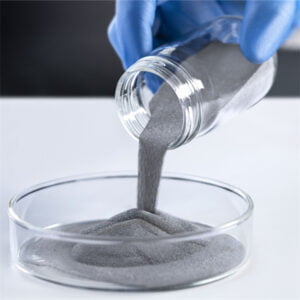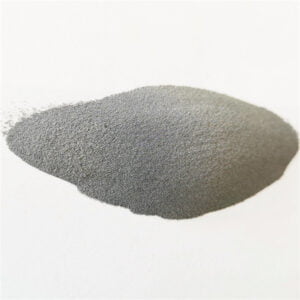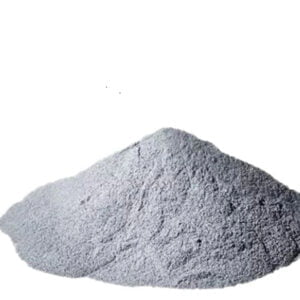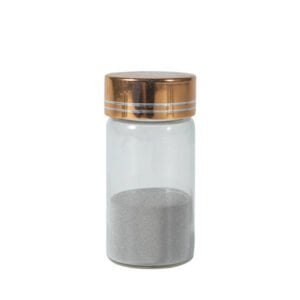C22 powder phosphoric acid manufacturing
Table of Contents
Phosphoric acid, a cornerstone of modern industry, finds itself in everything from fertilizers to food additives and detergents. But its production process can be energy-intensive and rely on harsh chemicals. Enter C22 powder, a revolutionary technology poised to transform phosphoric acid manufacturing with its focus on efficiency and sustainability.
This comprehensive guide dives deep into the world of C22 powder phosphoric acid manufacturing. We’ll explore the intricacies of the process, unveil the powder of various metal powder models, and shed light on the applications, advantages, and limitations of this innovative approach. Buckle up, chemistry enthusiasts and industry professionals alike, as we embark on a journey into the future of phosphoric acid production!
An Overview of C22 Powder Phosphoric Acid Manufacturing
C22 powder technology disrupts the traditional wet-acid process for phosphoric acid production. Here’s the gist:
- Wet-acid process: This conventional method involves reacting phosphate rock with sulfuric acid, generating a lot of heat and releasing harmful byproducts like fluorides.
- C22 powder: This innovative approach utilizes a thermal decomposition process. Phosphate rock is heated in a reactor under controlled conditions, breaking it down into phosphoric acid vapor and other gaseous products. Metal powders, specifically chosen for their catalytic properties, play a crucial role in enhancing the reaction efficiency.
The C22 powder method boasts several advantages:
- Reduced energy consumption: Compared to the wet-acid process, C22 powder requires significantly less energy, translating to a smaller environmental footprint.
- Cleaner production: By eliminating the need for sulfuric acid, C22 powder minimizes the generation of harmful byproducts.
- Improved efficiency: Metal powders act as catalysts, accelerating the reaction and increasing phosphoric acid yield.
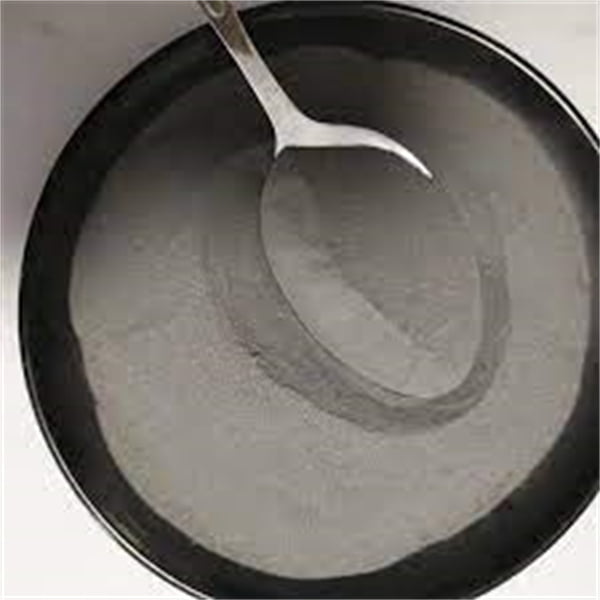
10+ Metal Powders for C22 Powder
The choice of metal powder in C22 powder technology significantly impacts the reaction’s efficacy. Let’s delve into a selection of these metallic marvels:
1. Iron (Fe): A readily available and cost-effective option, iron powder demonstrates decent catalytic activity for phosphoric acid decomposition. However, its effectiveness can decline over time due to oxidation and sintering (formation of larger particles).
2. Nickel (Ni): Known for its excellent catalytic properties, nickel powder promotes efficient phosphoric acid production. Compared to iron, nickel offers better resistance to oxidation, but comes at a higher cost.
3. Cobalt (Co): Similar to nickel, cobalt powder showcases exceptional catalytic activity. Additionally, it exhibits improved high-temperature stability. However, cobalt’s relative scarcity and higher price point can be a drawback.
4. Copper (Cu): A versatile metal, copper powder exhibits some catalytic activity for phosphoric acid decomposition. It’s often combined with other metals (like iron or nickel) to create bimetallic catalysts, potentially offering synergistic effects for enhanced performance.
5. Molybdenum (Mo): This less common option demonstrates promising catalytic activity in phosphoric acid production. Molybdenum-based catalysts often require specific activation procedures for optimal performance.
6. Tungsten (W): Renowned for its high melting point and stability, tungsten powder finds application in high-temperature C22 powder processes. However, its high cost can be a limiting factor.
7. Cerium (Ce): This rare earth metal, in powder form, exhibits excellent catalytic activity and resistance to sintering. However, its scarcity and high price make it a less commercially viable option for large-scale production.
8. Lanthanum (La): Another rare earth metal, lanthanum powder possesses interesting catalytic properties for phosphoric acid decomposition. Similar to cerium, its high cost and limited availability hinder widespread adoption.
9. Bimetallic and Multimetallic Powders: By combining different metals, researchers have developed innovative bimetallic and multimetallic catalysts. These often leverage the strengths of individual metals, potentially leading to superior performance and improved catalyst stability. Examples include iron-nickel, copper-cobalt, and cerium-molybdenum combinations.
10. Metal Alloys: Engineering metal alloys specifically tailored for C22 powder applications is an ongoing area of research. These alloys aim to optimize catalytic activity, high-temperature stability, and cost-effectiveness.
The selection of the ideal metal powder (or combination) hinges on various factors, including:
- Catalytic activity: The metal’s ability to accelerate the phosphoric acid decomposition reaction.
- High-temperature stability: The powder’s ability to maintain its structure and catalytic properties under the high temperatures encountered in the C22 powder process.
- Cost-effectiveness: The affordability of the metal powder plays a crucial role in large-scale manufacturing.
Cost, Stability, and Performance
We’ve explored a diverse range of metal powders for C22 powder applications. Now, let’s delve deeper, comparing their strengths and weaknesses to understand which might be the champion:
Iron (Fe):
- Pros: Abundant, inexpensive
- Cons: Lower catalytic activity, prone to oxidation and sintering
Imagine iron powder as the workhorse of the group. It’s readily available and budget-friendly, making it an attractive option for cost-conscious manufacturers. However, its catalytic activity isn’t the most impressive, and its effectiveness can wane over time as it oxidizes and forms larger particles. Think of it as a reliable but potentially tiring worker who needs frequent replacements.
Nickel (Ni):
- Pros: Excellent catalytic activity, good resistance to oxidation
- Cons: Higher cost compared to iron
Nickel steps up as the high-performing teammate. It boasts superior catalytic activity compared to iron, leading to a more productive phosphoric acid yield. Additionally, it shows better resilience against oxidation, ensuring it stays in the game for longer. However, this enhanced performance comes at a steeper price tag, which manufacturers need to consider.
Cobalt (Co):
- Pros: Exceptional catalytic activity, high-temperature stability
- Cons: Relatively scarce, expensive
Cobalt enters the ring as the premium player. It boasts phenomenal catalytic activity, pushing the boundaries of phosphoric acid production efficiency. Furthermore, its high-temperature stability makes it ideal for demanding C22 powder processes. But just like a star athlete, cobalt comes with a hefty price tag and limited availability, making it a less accessible option for some manufacturers.
The battle between nickel and cobalt is an interesting one. Nickel offers a good balance of performance and cost, while cobalt excels in activity and stability. The choice ultimately depends on a manufacturer’s priorities and budget constraints.
Copper (Cu):
- Pros: Versatile, can be combined with other metals for enhanced performance
- Cons: Moderate catalytic activity on its own
Copper acts as the adaptable teammate. While its solo catalytic activity for phosphoric acid decomposition is moderate, its true strength lies in its ability to form potent partnerships. When combined with other metals like iron or nickel, copper creates bimetallic catalysts that can unlock synergistic effects, potentially leading to a significant boost in performance. Imagine copper as the team strategist, forging alliances to maximize results.
Molybdenum (Mo) and Tungsten (W):
- Molybdenum: Promising catalytic activity, requires specific activation
- Tungsten: Excellent high-temperature stability, high cost
Molybdenum and tungsten represent the niche specialists. Molybdenum showcases promising catalytic abilities, but it often requires specific activation procedures before reaching its full potential. Think of it as a talented rookie who needs some training to unleash their true skills. Tungsten, on the other hand, shines in high-temperature environments due to its exceptional stability. However, its high cost makes it a less practical choice for large-scale production, positioning it as the veteran who demands a premium salary.
Rare Earth Metals: Cerium (Ce) and Lanthanum (La):
- Pros: Excellent catalytic activity and resistance to sintering
- Cons: Scarce, expensive (limiting commercial viability)
Cerium and lanthanum, the rare earth metals, are the high-maintenance superstars. They possess exceptional catalytic activity and resist sintering, ensuring consistent performance. Imagine them as the celebrities of the metal world, delivering top-notch results. But just like celebrities, their scarcity and high price make them less suitable for large-scale, cost-effective production.
Bimetallic and Multimetallic Powders:
- Pros: Potential for superior performance and stability by combining strengths of individual metals
Bimetallic and multimetallic powders are the dream teams of the C22 powder world. Researchers are constantly exploring combinations like iron-nickel, copper-cobalt, and cerium-molybdenum. These partnerships aim to leverage the strengths of each metal, potentially leading to superior catalytic activity, improved stability, and a more robust catalyst overall. Imagine them as a well-coordinated team, each player contributing their unique skills for a winning outcome.
Metal Alloys:
- Pros: Tailored properties for optimal performance and cost-effectiveness
Metal alloys are the custom-built solutions of the C22 powder landscape. Researchers are actively developing alloys specifically designed for this application. These alloys aim to strike the perfect balance between high catalytic activity, high-temperature stability, and affordability. Think of them as athletes who’ve undergone rigorous training to excel in the specific demands of C22 powder.
The race to discover the ideal metal powder (or combination) for C22 powder is ongoing. Manufacturers
-
 Ti45Nb Powder for Additive Manufacturing
Ti45Nb Powder for Additive Manufacturing -
 TiNb Alloy Powder
TiNb Alloy Powder -
 TiNbZrSn Alloy Powder
TiNbZrSn Alloy Powder -
 Ti6Al4V Powder Titanium Based Metal Powder for Additive Manufacturing
Ti6Al4V Powder Titanium Based Metal Powder for Additive Manufacturing -
 CPTi Powder
CPTi Powder -
 TC18 Powder : Unlocking the Power of Titanium Carbide
TC18 Powder : Unlocking the Power of Titanium Carbide -
 TC11 Powder : A Comprehensive Guide
TC11 Powder : A Comprehensive Guide -
 TC4 ELI Powder
TC4 ELI Powder -
 Best Ti-6Al-4V powder (TC4 Powder)for additive manufacturing
Best Ti-6Al-4V powder (TC4 Powder)for additive manufacturing
Applications of C22 Powder Phosphoric Acid
The phosphoric acid produced through the C22 powder process boasts the same quality and chemical properties as conventionally manufactured phosphoric acid. This opens doors to a plethora of applications across various industries:
- Fertilizers: Phosphoric acid is a crucial component of fertilizers, providing essential phosphorus for plant growth. C22 powder technology can contribute to a more sustainable fertilizer production chain.
- Food and Beverages: Phosphoric acid finds use in specific food and beverage applications, such as leavening agents in baked goods and as an acidity regulator in some soft drinks. C22 powder-produced phosphoric acid can cater to this demand while potentially reducing the environmental footprint.
- Animal Feed Additives: Phosphoric acid plays a role in animal feed supplements, ensuring proper bone development and mineral balance in livestock. C22 powder technology can contribute to a more sustainable production of these essential additives.
- Flame Retardants: Certain types of phosphoric acid are used in flame retardants for textiles and plastics. C22 powder can potentially play a role in the sustainable manufacturing of these fire safety materials.
- Metal Cleaning and Surface Treatment: Phosphoric acid is used in metal cleaning solutions and surface treatment processes. C22 powder-produced phosphoric acid can cater to this industrial demand with a potentially reduced environmental impact.
- Pharmaceuticals: Phosphoric acid has some applications in the pharmaceutical industry, such as certain medications and drug manufacturing processes. C22 powder technology can contribute to a more sustainable supply chain for these applications.
- Research and Development: Phosphoric acid is a valuable material in various research and development activities. C22 powder can ensure a reliable and potentially more sustainable source for these endeavors.
The applications of C22 power-produced phosphoric acid are vast and extend beyond the examples listed above. As the technology matures and production costs become more competitive, we can expect even wider adoption across various industries.
Advantages of C22 Powder Phosphoric Acid Manufacturing
C22 powder technology offers several compelling advantages compared to the traditional wet-acid process for phosphoric acid production:
- Reduced Energy Consumption: The C22 powder process significantly reduces energy consumption compared to the wet-acid method. This translates to a smaller carbon footprint and lower production costs.
- Cleaner Production: By eliminating the need for sulfuric acid, C22 powder minimizes the generation of harmful byproducts like fluorides. This leads to a cleaner and more environmentally friendly production process.
- Improved Efficiency: Metal powder catalysts accelerate the phosphoric acid decomposition reaction, leading to a higher yield and potentially reducing processing times.
- Potential for On-Site Production: The modular nature of C22 powder technology allows for the possibility of on-site phosphoric acid production at fertilizer plants or other locations where it’s directly used. This can streamline logistics and potentially reduce transportation costs.
- Reduced Water Usage: The C22 powder process requires significantly less water compared to the wet-acid method, making it a more water-conservative approach, especially valuable in regions facing water scarcity.
C22 Powder: A Potential Game Changer
The emergence of C22 powder technology holds immense promise for the phosphoric acid industry. By offering a cleaner, more efficient, and potentially more sustainable production method, C22 powder can contribute to a greener future for the fertilizer industry and numerous other applications that rely on phosphoric acid.
Limitations and Challenges of C22 Powder Phosphoric Acid Manufacturing
While C22 powder boasts significant advantages, it’s essential to acknowledge the limitations and challenges associated with this developing technology:
- Technology Maturity: C22 powder is a relatively new technology compared to the well-established wet-acid process. Further research and development are needed to optimize the process and ensure its long-term stability and reliability.
- Cost Competitiveness: Currently, the cost of C22 powder technology might be higher than traditional wet-acid methods. As the technology matures and production scales up, we can expect the costs to become more competitive.
- Metal Powder Selection: Identifying the optimal metal powder (or combination) for cost-effective, high-performance C22 powder operation remains an ongoing challenge. Research efforts are crucial to develop new and improved catalysts.
- Upfront Investment: Implementing C22 powder technology requires upfront investment in new equipment and infrastructure. This can be a hurdle for some manufacturers, especially small and medium-sized enterprises.
- Regulations and Standards: As C22 powder technology is relatively new, regulatory frameworks and industry standards for this process are still evolving. Establishing clear guidelines will be essential for wider adoption.
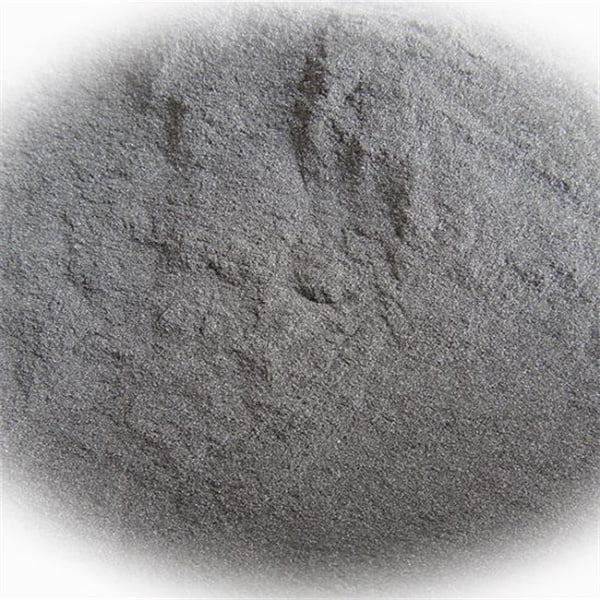
FAQ
Here are some frequently asked questions regarding C22 powder phosphoric acid manufacturing:
Q: What are the environmental benefits of C22 powder compared to the wet-acid process?
A: C22 powder offers several environmental advantages:
- Reduced energy consumption: Lower energy use translates to a smaller carbon footprint and less greenhouse gas emissions.
- Cleaner production: Elimination of sulfuric acid minimizes the generation of harmful byproducts like fluorides, leading to a cleaner production process.
- Reduced water usage: C22 powder requires significantly less water compared to the wet-acid method, making it a more water-conservative approach.
Q: Is C22 powder-produced phosphoric acid the same as conventionally produced phosphoric acid?
A: Yes, the phosphoric acid produced through C22 powder possesses the same chemical properties and quality as conventionally manufactured phosphoric acid. This ensures its compatibility with existing applications across various industries.
Q: What are the cost considerations for C22 powder technology?
A: Currently, the upfront investment in C22 powder technology, including equipment and infrastructure, might be higher than traditional wet-acid methods. However, the benefits of reduced energy consumption, potentially lower water usage, and a cleaner process can lead to long-term cost savings. Additionally, as the technology matures and production scales up, we can expect the costs to become more competitive.
Q: What are some of the challenges hindering the wider adoption of C22 powder?
A: Here are some key challenges:
- Technology maturity: C22 powder is a relatively new technology, requiring further research and development for long-term stability and optimization.
- Cost competitiveness: Currently, the cost of C22 powder technology might be higher than existing methods.
- Metal powder selection: Finding the optimal and cost-effective metal powder catalyst remains an ongoing challenge.
- Upfront investment: Implementing C22 powder requires upfront investment in new equipment, which can be a hurdle for some manufacturers.
Q: What is the future outlook for C22 powder technology?
A: The future of C22 powder looks promising. Ongoing research, cost reduction strategies, and collaboration between industry and academia can address the challenges and pave the way for wider adoption. C22 powder has the potential to revolutionize phosphoric acid production, making it a cleaner, more efficient, and more sustainable process for the future.
In Conclusion
C22 powder technology presents a compelling alternative for phosphoric acid production. By offering a cleaner, more efficient, and potentially more sustainable approach, C22 powder has the potential to transform the industry. While challenges remain, ongoing research and development hold the key to unlocking the full potential of this innovative technology. As C22 powder matures and becomes more cost-competitive, we can expect it to play a significant role in shaping the future of sustainable phosphoric acid production for a greener tomorrow.
Share On
MET3DP Technology Co., LTD is a leading provider of additive manufacturing solutions headquartered in Qingdao, China. Our company specializes in 3D printing equipment and high-performance metal powders for industrial applications.
Inquiry to get best price and customized Solution for your business!
Related Articles
About Met3DP
Recent Update
Our Product
CONTACT US
Any questions? Send us message now! We’ll serve your request with a whole team after receiving your message.

Metal Powders for 3D Printing and Additive Manufacturing
COMPANY
PRODUCT
cONTACT INFO
- Qingdao City, Shandong, China
- [email protected]
- [email protected]
- +86 19116340731









